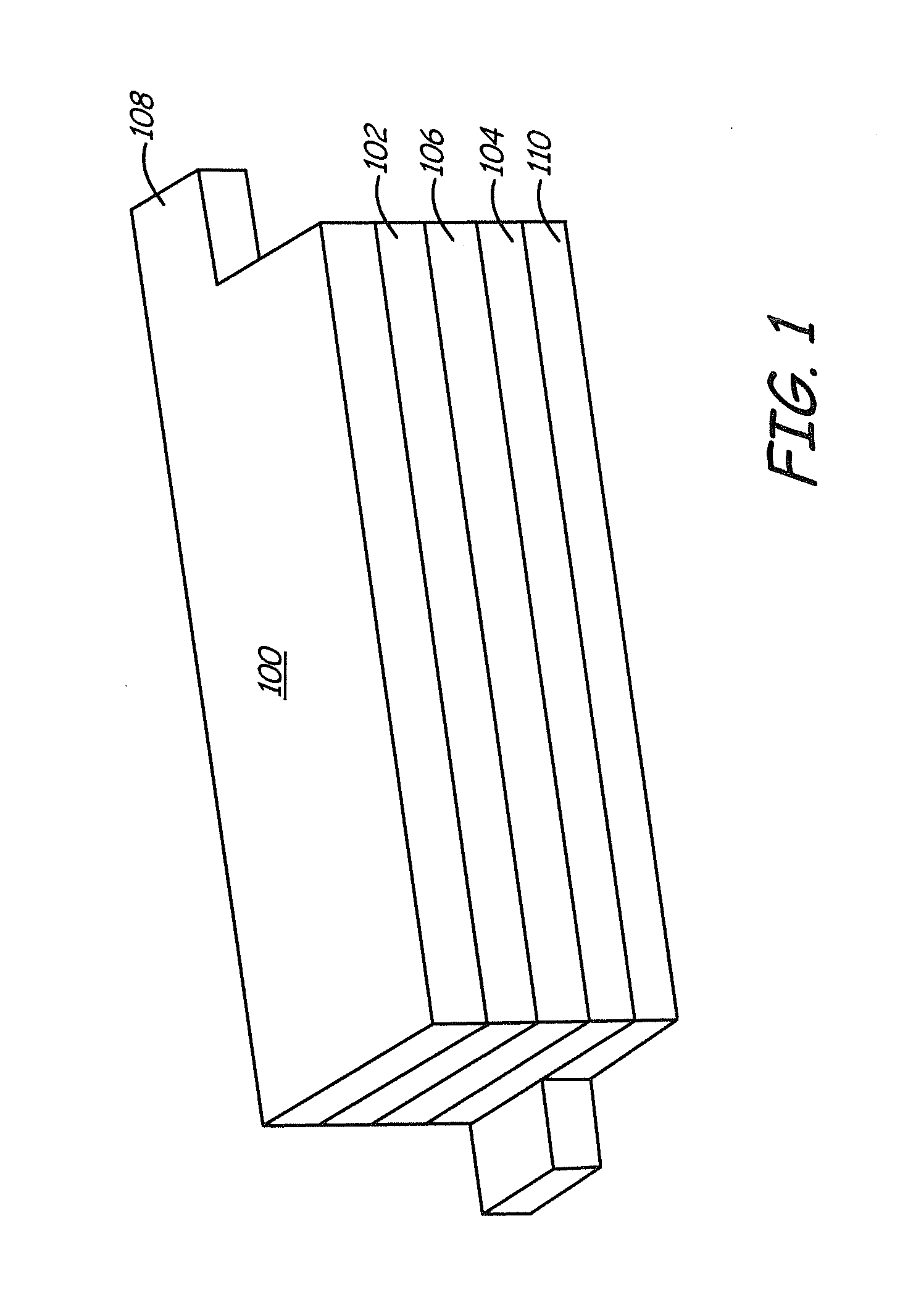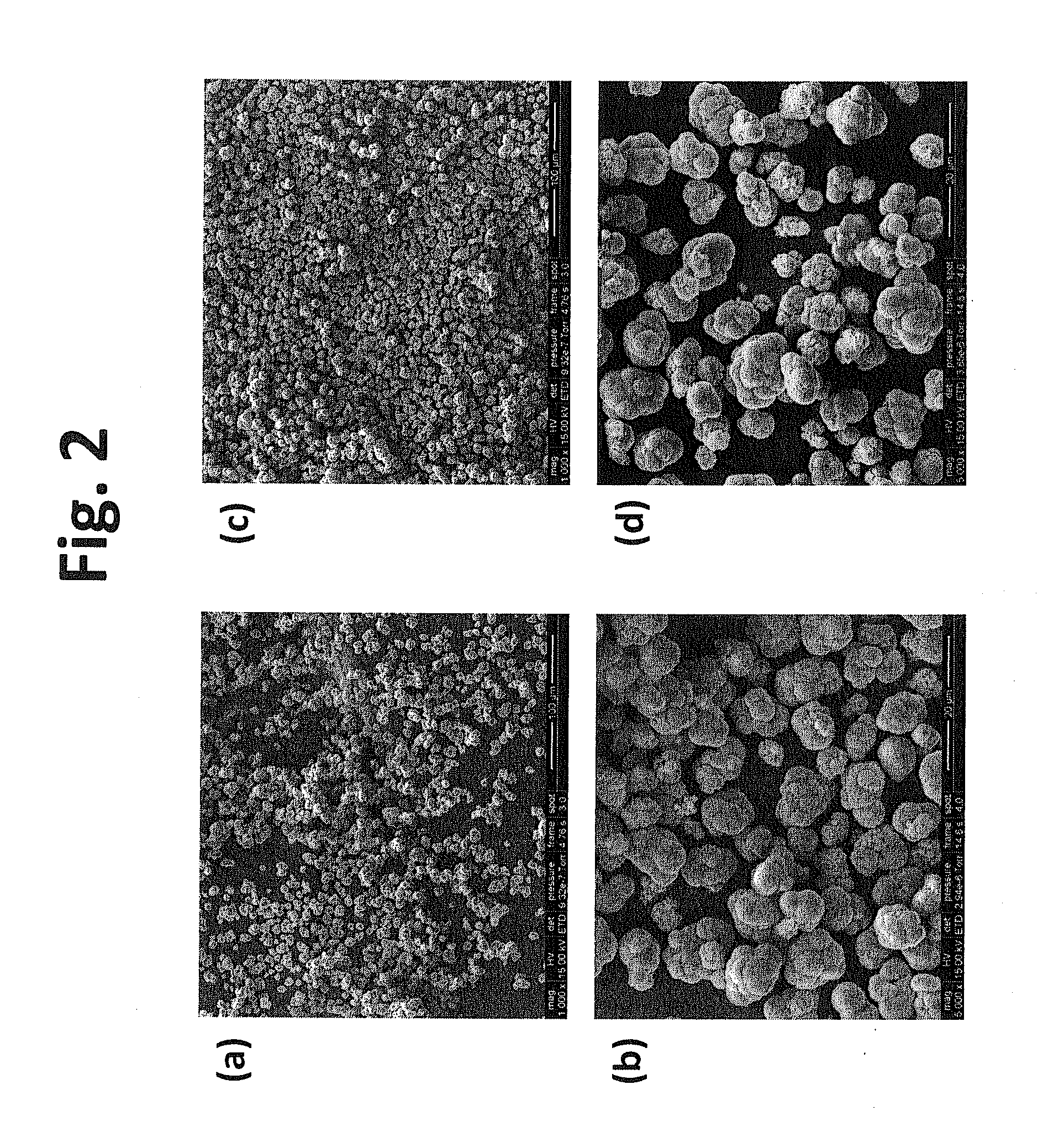Coated positive electrode materials for lithium ion batteries
a positive electrode and active material technology, applied in the direction of cell components, electrochemical generators, nickel compounds, etc., can solve the problems of low energy density of battery cells, no significant improvement in energy density,
- Summary
- Abstract
- Description
- Claims
- Application Information
AI Technical Summary
Problems solved by technology
Method used
Image
Examples
example 1
Reaction of Metal Sulfate with Na2 Co3 / NH4OH for Carbonate Co-Precipitation
[0096]This example demonstrates the formation of a desired cathode active material using a carbonate co-precipitation process. Stoichiometric amounts of metal sulfates (NiSO4.xH2O, CoSO4.xH2O, & MnSO4.xH2O) were dissolved in distilled water to form a metal sulfate aqueous solution. Separately, an aqueous solution containing Na2 CO3 and NH4OH was prepared. For the formation of the samples, the two solutions were gradually added to a reaction vessel to form metal carbonate precipitates. The reaction mixture was stirred, and the temperature of the reaction mixture was kept at a temperature between room temperature and 80° C. for 2-24 hours. The pH of the reaction mixture was in the range from 6-9. In general, the aqueous metal sulfate solution had a concentration from 1M to 3M, and the aqueous Na2 CO3 / NH4OH solution had a Na2 CO3 concentration of 1M to 4M and a NH4OH concentration of 0.2-2M. The metal carbonate ...
example 2
Formation of AlF3 Coated Metal Oxide Materials
[0100]The metal oxide particles prepared in the above example were coated with a thin layer of aluminum fluoride (AlF3) using a solution-based method. For a selected amount of aluminum fluoride coating, an appropriate amount of saturated solution of aluminum nitrate was prepared in an aqueous solvent. The metal oxide particles were then added into the aluminum nitrate solution to form a mixture. The mixture was mixed vigorously for a period of time to homogenize. The length of mixing depends on the volume of the mixture. After homogenization, a stoichiometric amount of ammonium fluoride was added to the homogenized mixture to form aluminum fluoride precipitate while retaining the source of fluorine. Upon the completion of the precipitation, the mixture was stirred at 80° C. for 5 h. The mixture was then filtered and the solid obtained was washed repeatedly to remove any un-reacted materials. The solid was calcined in nitrogen atmosphere ...
example 3
Battery Performance for AlF3 Coated Samples
[0103]This example demonstrates how the battery performance varied with respect to coating thickness for a range of AlF3 coating thicknesses and for various battery performance parameters.
[0104]The impedance of the positive electrodes was examined using electrochemical impedance spectroscopy (EIS). This data provides information on the interfacial characteristics of the coated materials. The electrode is perturbed with a current in the form of a sinusoidal wave. A plot of the EIS results is presented in FIG. 8. These results show that a greater charge transfer resistance results form thicker AlF3 coatings.
[0105]Coin cell batteries were formed from the materials synthesized as described in Example 2 using the process and coin cell structure described above. The cells were cycled to evaluate their performance. The first three cycles were measured at a charge / discharge rate of 0.1 C. The next three cycles were measured at a charge / discharge ra...
PUM
| Property | Measurement | Unit |
|---|---|---|
| thickness | aaaaa | aaaaa |
| thickness | aaaaa | aaaaa |
| thickness | aaaaa | aaaaa |
Abstract
Description
Claims
Application Information
 Login to View More
Login to View More - R&D
- Intellectual Property
- Life Sciences
- Materials
- Tech Scout
- Unparalleled Data Quality
- Higher Quality Content
- 60% Fewer Hallucinations
Browse by: Latest US Patents, China's latest patents, Technical Efficacy Thesaurus, Application Domain, Technology Topic, Popular Technical Reports.
© 2025 PatSnap. All rights reserved.Legal|Privacy policy|Modern Slavery Act Transparency Statement|Sitemap|About US| Contact US: help@patsnap.com



